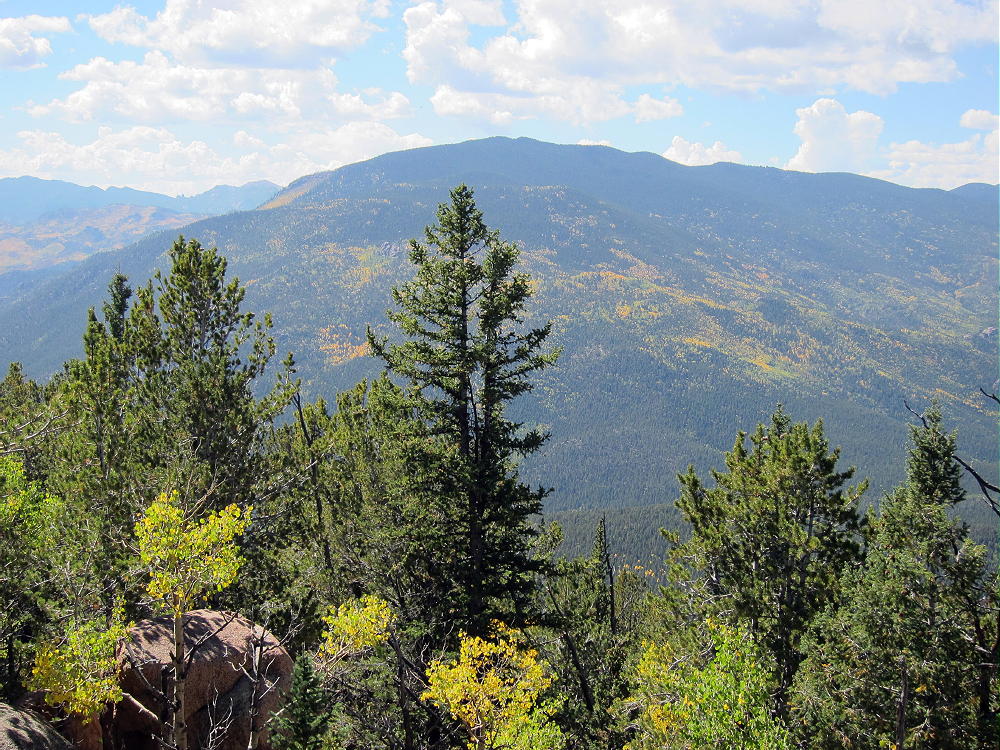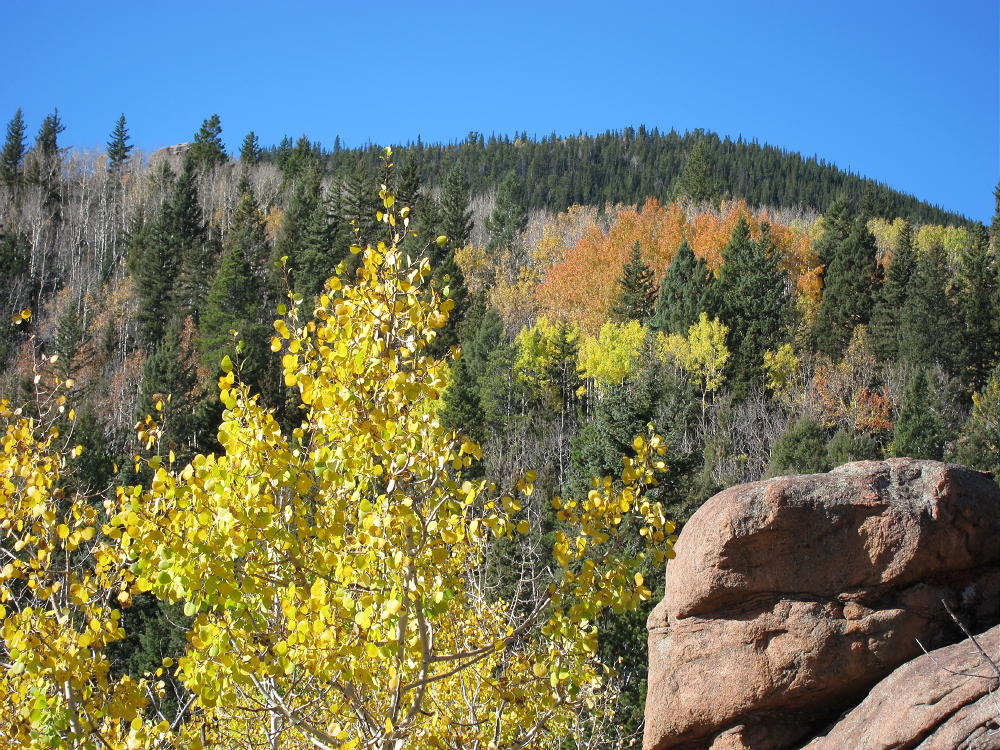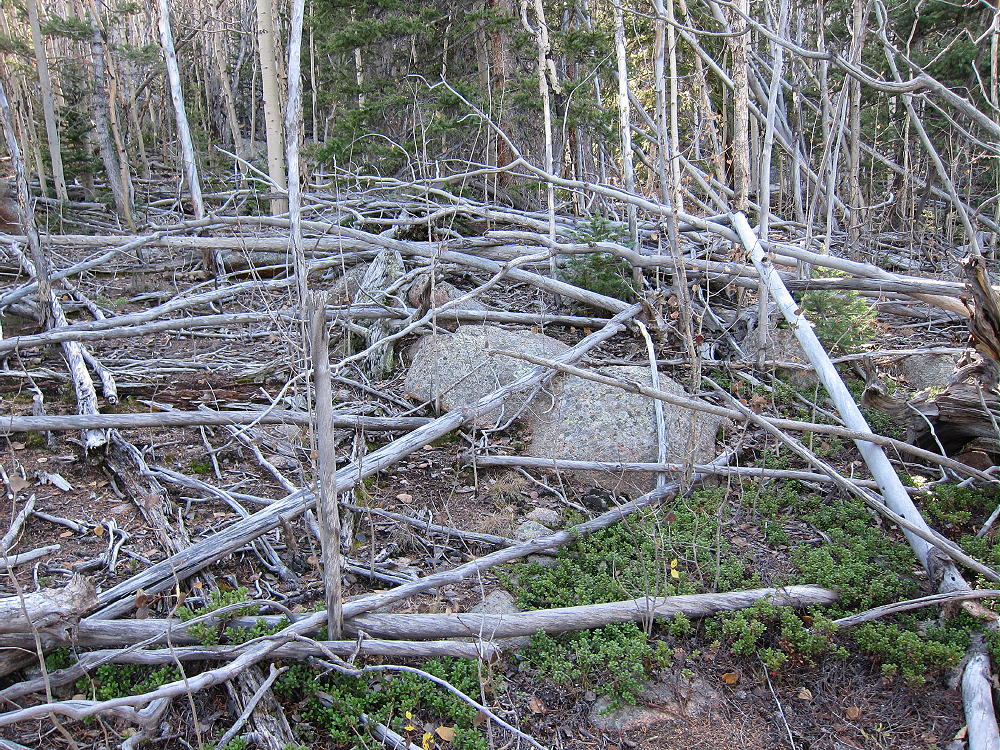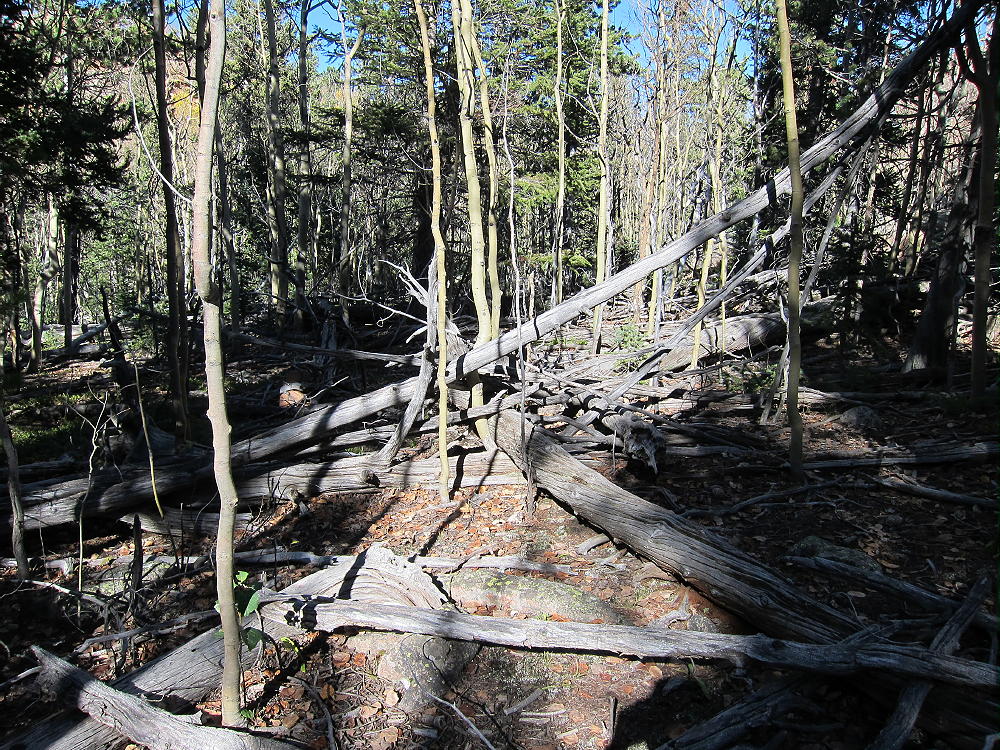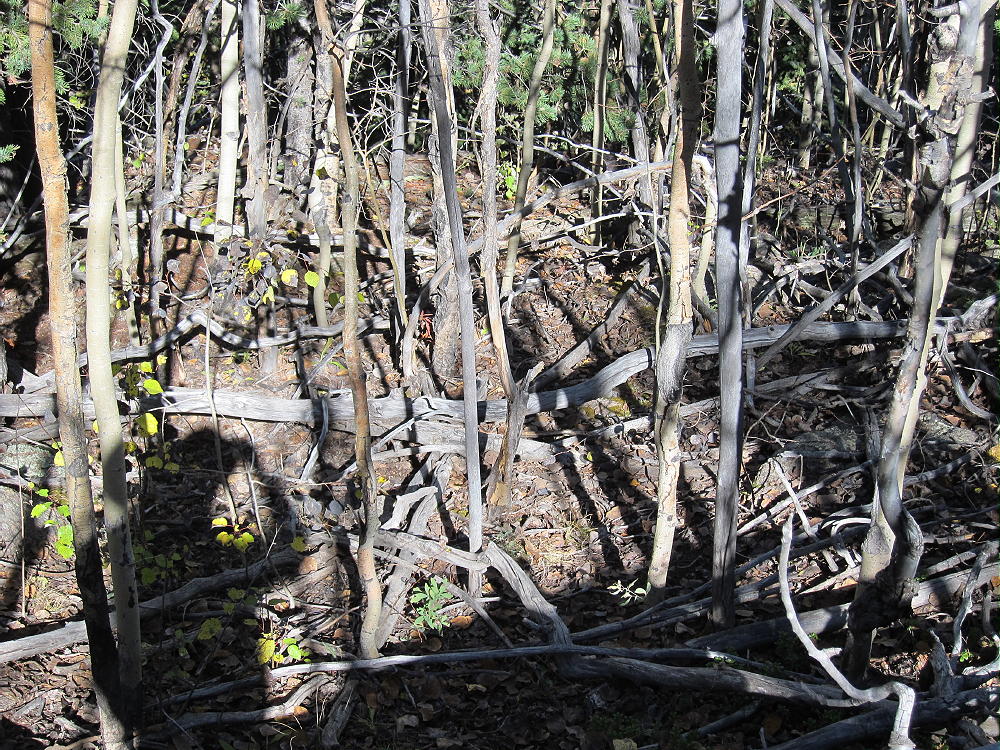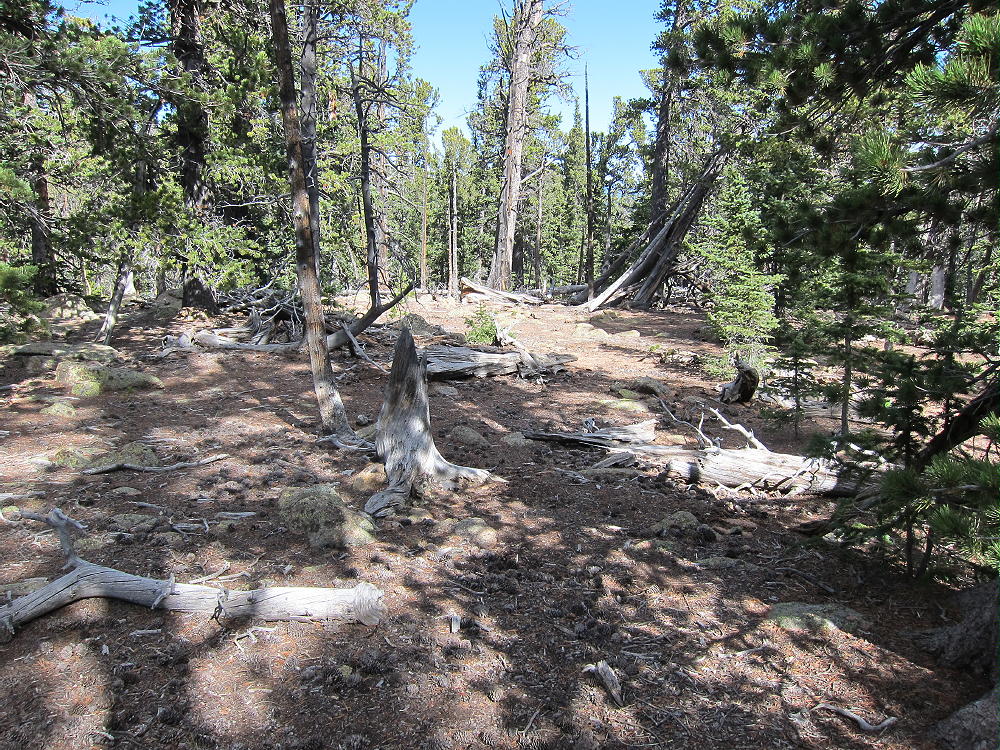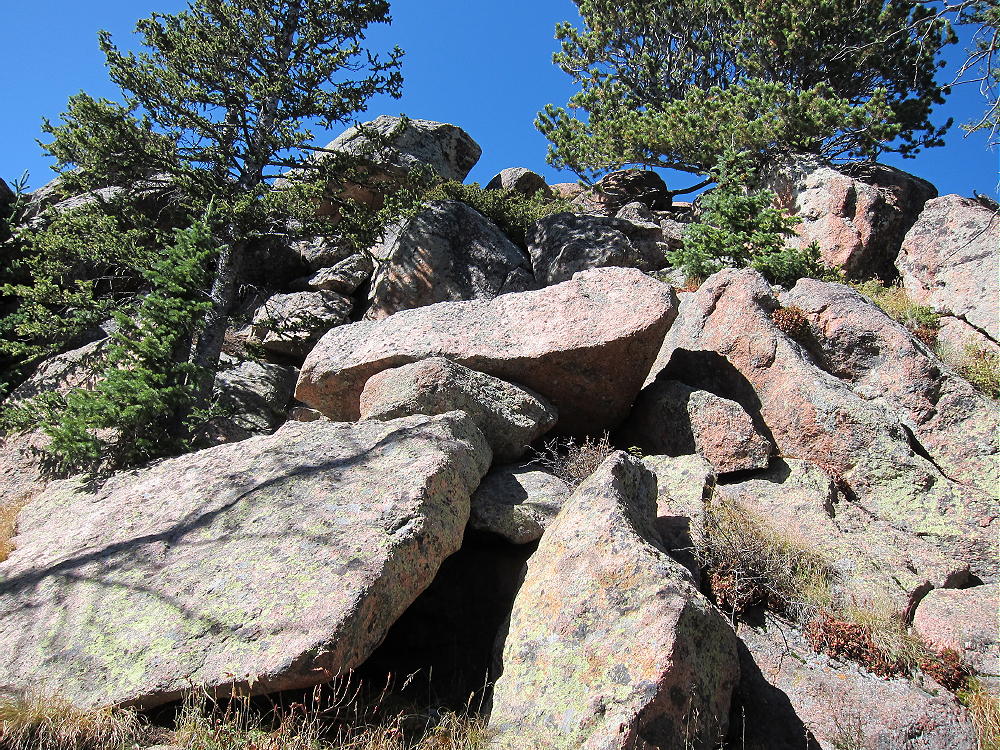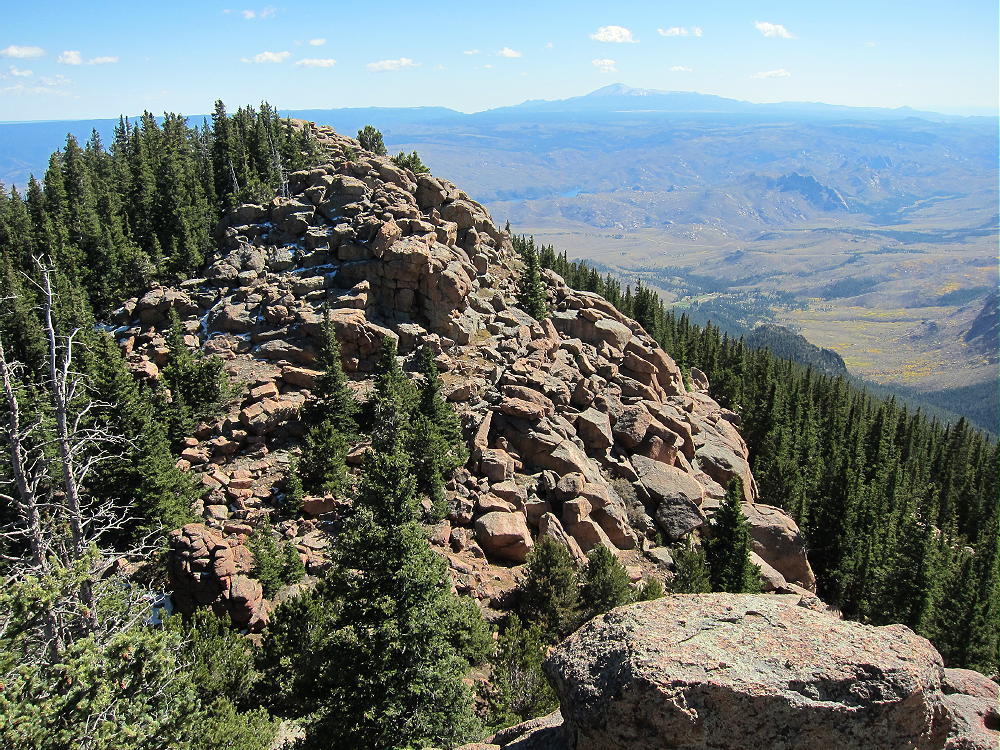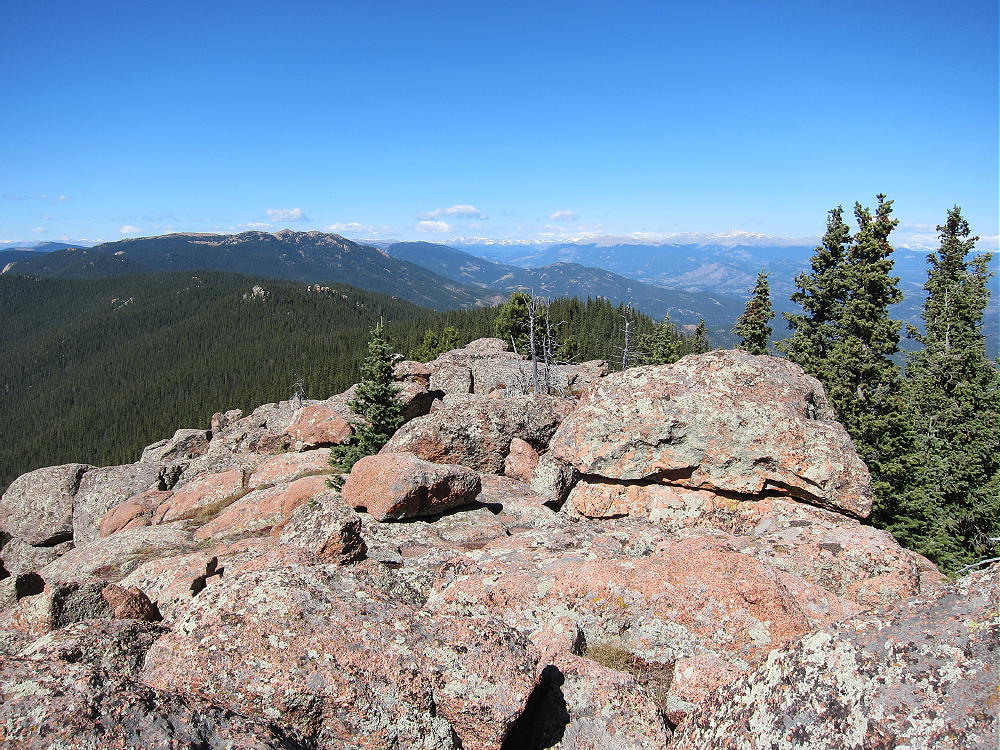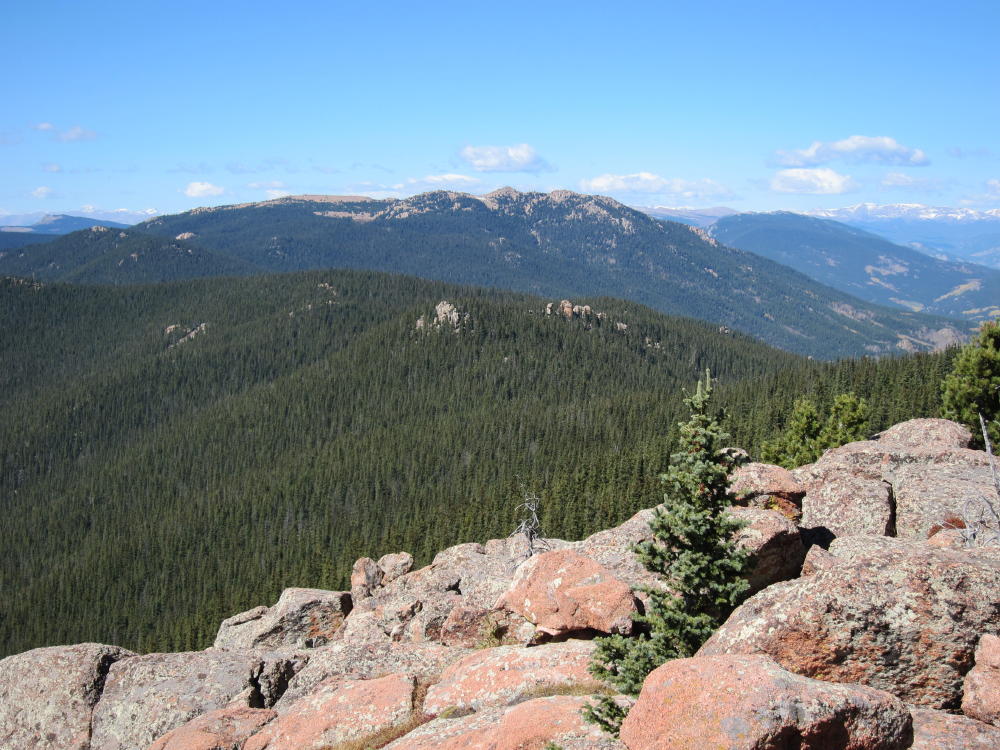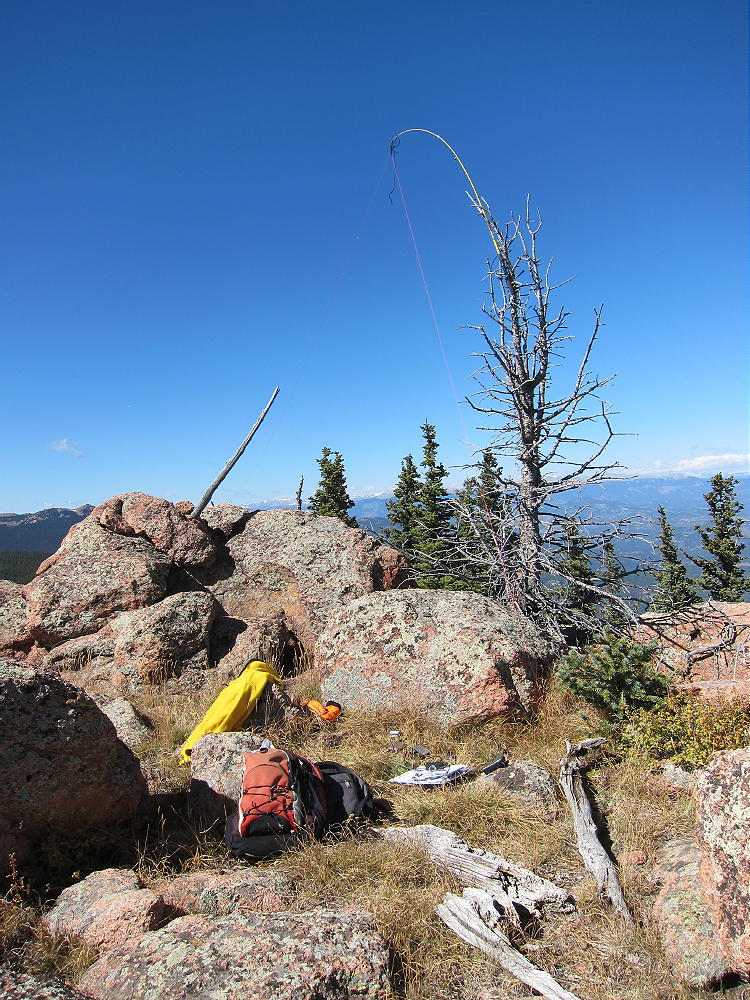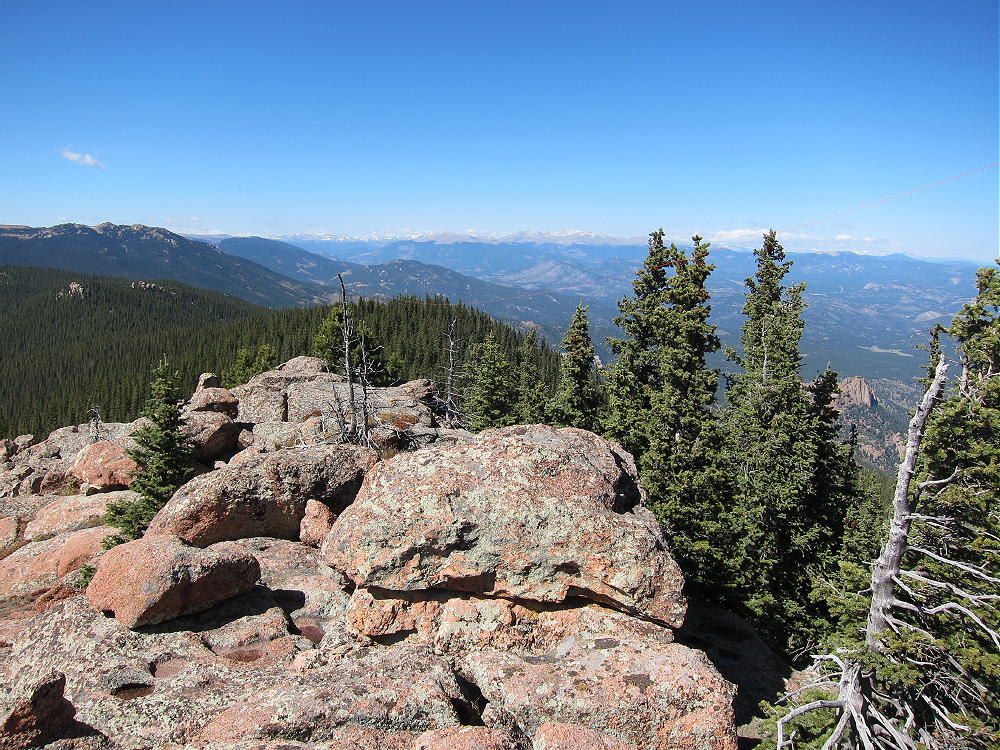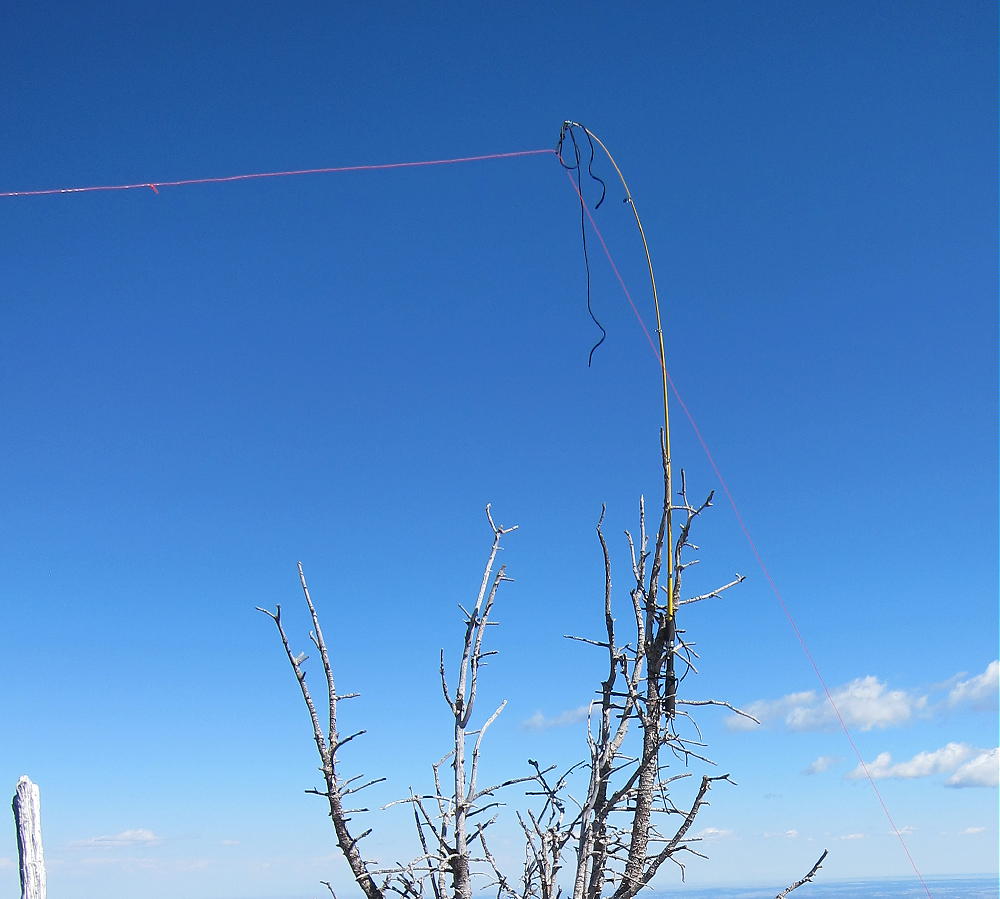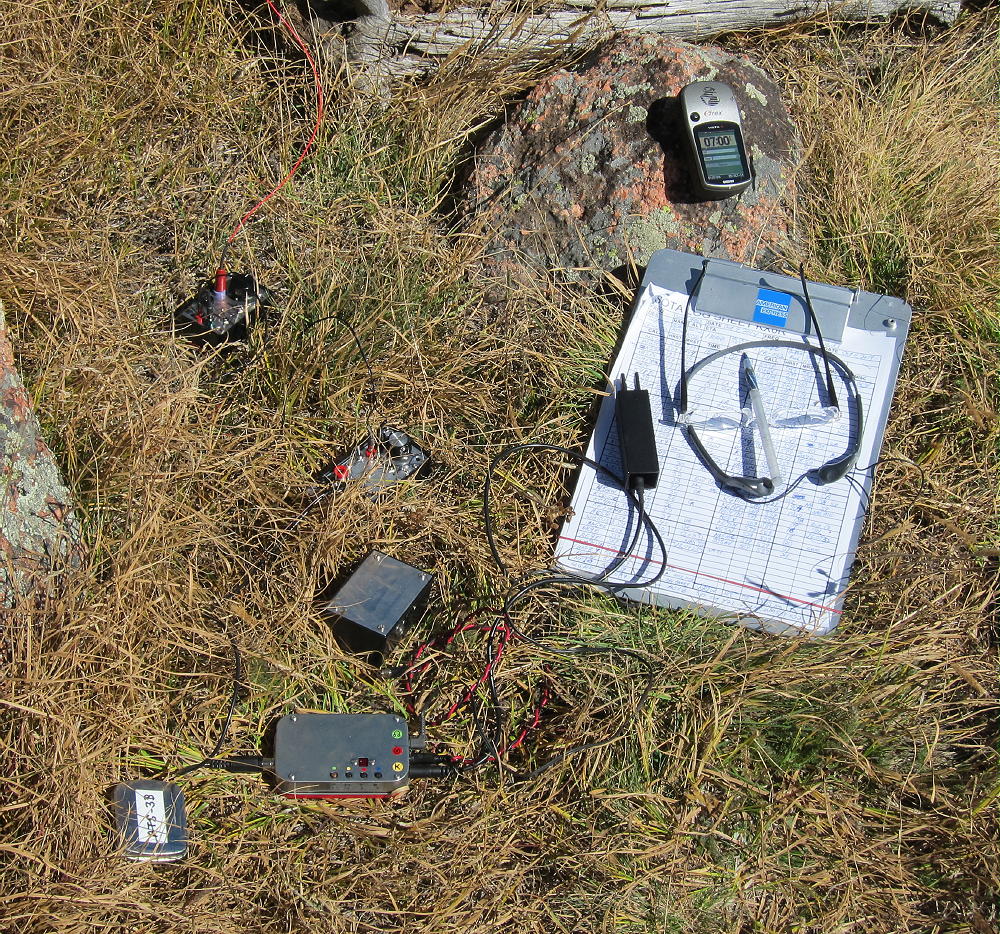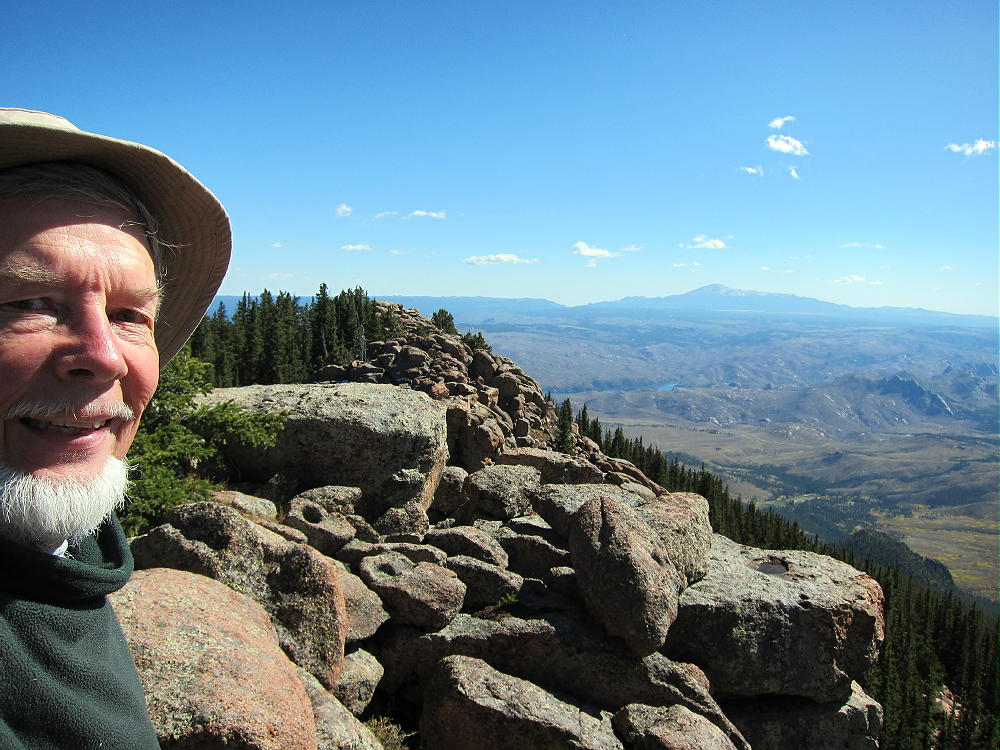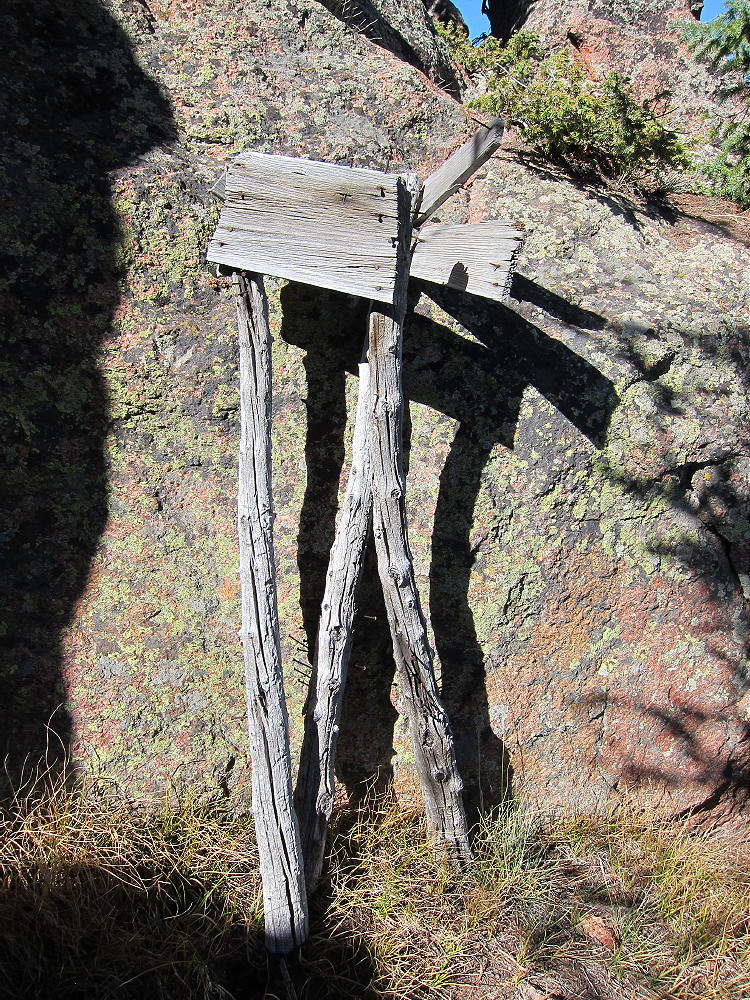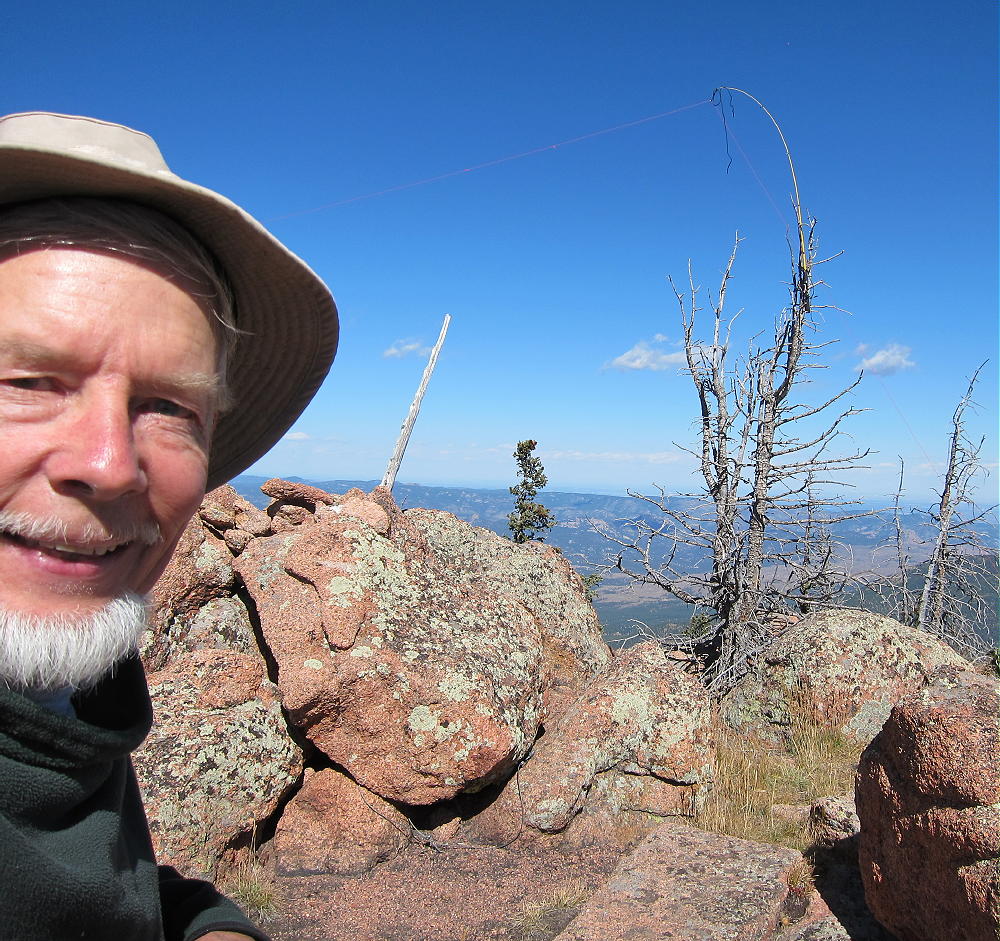Buffalo Peak (Freeman Peak)
W0C/FR-032
3525 m / 11589 ft
First Activation
Oct 5, 2014
by KX0R
Buffalo Peak, also called Freeman Peak, is a broad, prominent summit in the Pike National Forest, a couple of miles south of Wellington Lake. It’s about three miles inside the Lost Peak Wilderness, and at 11,589 feet, it’s the highest point in Jefferson County. Some time ago I found that it had not yet been “activated” in the SOTA (Summits on the Air) program. Since I started climbing and activating SOTA peaks in 2013, I’ve particularly enjoyed doing “first activations” of local summits. Since the SOTA program has been going for several years, most of the easy, accessible summits have been activated many times, but there are still many peaks in our state that have never been put on the air within the SOTA program.
I decided it was time to get up there before the route was buried under snow for the winter. I had seen Buffalo first-hand when I first-activated nearby 10,421’ Green Mountain W0C/FR-044. I studied the topo map, which shows no trail up Buffalo; but a reasonable-looking ridge runs 3000 vertical feet in 3 miles up to the summit from Stoney Pass at about 8,500 feet. I knew my VW bug could do the road, although it is a “first gear grade” part of the way. Sometimes climbing a high forested ridge is not too bad – there are game trails, and the slopes are reasonable to climb in good weather. Right before I went down there, I read an online trip report by two tough young ladies who climbed Buffalo in the snow in late October 2013. They pulled it off with no map or GPS – why? – but they posted wonderful photos and clearly “aced it” – I decided to do it. The ladies warned that it was a steep “bushwhack” route most of the way. I posted my “Alert” on the SOTA page, set the alarm for early, got my stuff ready, slept, and drove to Stoney Pass.
Even though it was a perfect Indian Summer day, there was no one at the pass. I locked my GPS on, headed west, up through the easy woods, and glanced at my map as I started up the huge, steep ridge. Gradually the grade increased, and I tried to stay on the faint game trails, dodging numerous downed trees. In less than an hour my GPS said I’d gained 1000 feet.
I noticed than there were more and more aspen trees, and fewer lodgepole pines…for the next mile I climbed through endless thickets of dead and live aspens, often with so many fallen trees and dead standing trees that passage was possible only in zig-zag fashion.
- Buffalo Aspen Hell
- Typical Buffalo Forest Route
- More Aspen Hell on Buffalo Route
I was glad that I’d left my 4-foot Black Widow fishing pole at home – I needed both hands to deal with the rocky 3-dimensional thickets I had to traverse. At about 10,200 feet the aspens were no longer a problem, and the deep forest became more open and easier to climb through; but the grade was unrelenting.
At 11,000 feet everything opened up, the grade decreased, and I was cruising toward the summit. I had to bypass the south summit and then find and climb the north summit; that turned out to be easy class 3 – the route requires a scramble up about 30 feet.
Then I was on top of a huge elongated orange granite ridge, and the summit rock was right there! The 360-degree view was so incredible I didn’t want to look at first! There was a notebook in a water bottle under some rocks – I opened it – the first signature was Jennifer Roach, guidebook author and wife of climber-author Gerry Roach. Only a few people had signed in 2014 – and 2013, etc. The brass USCGS primary triangulation station bench marker said “FREEMAN”, 1953. This was it! I started getting ready to “activate” SOTA W0C/FR-032.
- Buffalo South Ridge and Pikes Peak
- Buffalo Peak Summit – Lost Creek Wilderness
- USCGS Geodetic Survey marker Freeman
- Windy Peak West of Buffalo
I figured I wouldn’t need a tall pole for my antenna, because the summit is forested…but the trees on top of the exposed granite ridge-top are all small, and the good trees are over 30 feet down below. I wanted to operate from the top, because the weather was perfect. Then the answer gradually came to me in the thin air. I took my 6-foot telescoping fishing pole out of the pack – I usually bring it to throw a weight over a tree to pull up the wire – but this time I tied my antenna wire to the top of the little pole. Then I stood on a big rock, reached up as far as I could, and tied the pole into the top of the only significant dead tree near the top. I took the wire spool and moved carefully down the spectacular exposed ridge stringing out 67 feet of #24 teflon and another 20 feet of Dacron.
- Buffalo Improvised Activation on Summit
- Buffalo Antenna Far End
- Detail of Fishing Pole DX Antenna
I found a dead tree trunk and used that for the end support. I tightened it up – it held – and then I climbed back across the rocky ridge and adjusted the feed end so I could connect the tuner. I got out my gear, connected up, got slightly comfortable, pulled out the clipboard with the log, put on the phones, plugged in the Palm Paddles, set up the ATS-3B for 15M, plugged in the battery, and immediately head loud CW signals on 21.060. I adjusted the tuner for peak noise, finished the match with the LED bridge, and got on 21.063 with 5W. I called CQ and in about a minute there was a pile! The lash-up antenna worked just fine! QSO #10 was DJ5AV Michael – 579 him, 539 me – just fine. 20M was even better than 15; after that I opened the link in the antenna, tuned up on 17M, and got a few more. At the end DJ5AV got me again on 18.093 – 569, 539. There were 32 contacts.
I spent a while taking pictures, packing up, eating, and enjoying the stunning views: Pikes Peak, the Hayman Burn, Windy Peak, the Divide, Mount Evans area, the Front Range way up north, the Plains and South Denver, and the Platte River Canyon panorama.
When I climbed down off the rocks, I found the site-built tripod that the USCGS surveyors built for their instruments back in 1953 – it was propped against the rocks, over 60 years later.
On the way down the steep ridge, I used my GPS to backtrack, since it’s easy to get off-course going down in the thick forest, where you can’t always tell where you’re going. In a couple of hours I was back at the car; I was home in time for dinner.
Buffalo Peak was another incredible SOTA Classic!
George Carey Fuller
KX0R
![]() !! WARNING !! There are old mountaineers, and
bold mountaineers... there are no old-bold mountaineers.
Hiking and mountain climbing are potentially hazardous activities particularly in Colorado with its extreme elevations. I am not accepting responsibility for any death or injury resulting from activations based on my trip reports. Proper training, experience, and personal capability assessment is required - enjoy!
!! WARNING !! There are old mountaineers, and
bold mountaineers... there are no old-bold mountaineers.
Hiking and mountain climbing are potentially hazardous activities particularly in Colorado with its extreme elevations. I am not accepting responsibility for any death or injury resulting from activations based on my trip reports. Proper training, experience, and personal capability assessment is required - enjoy!











